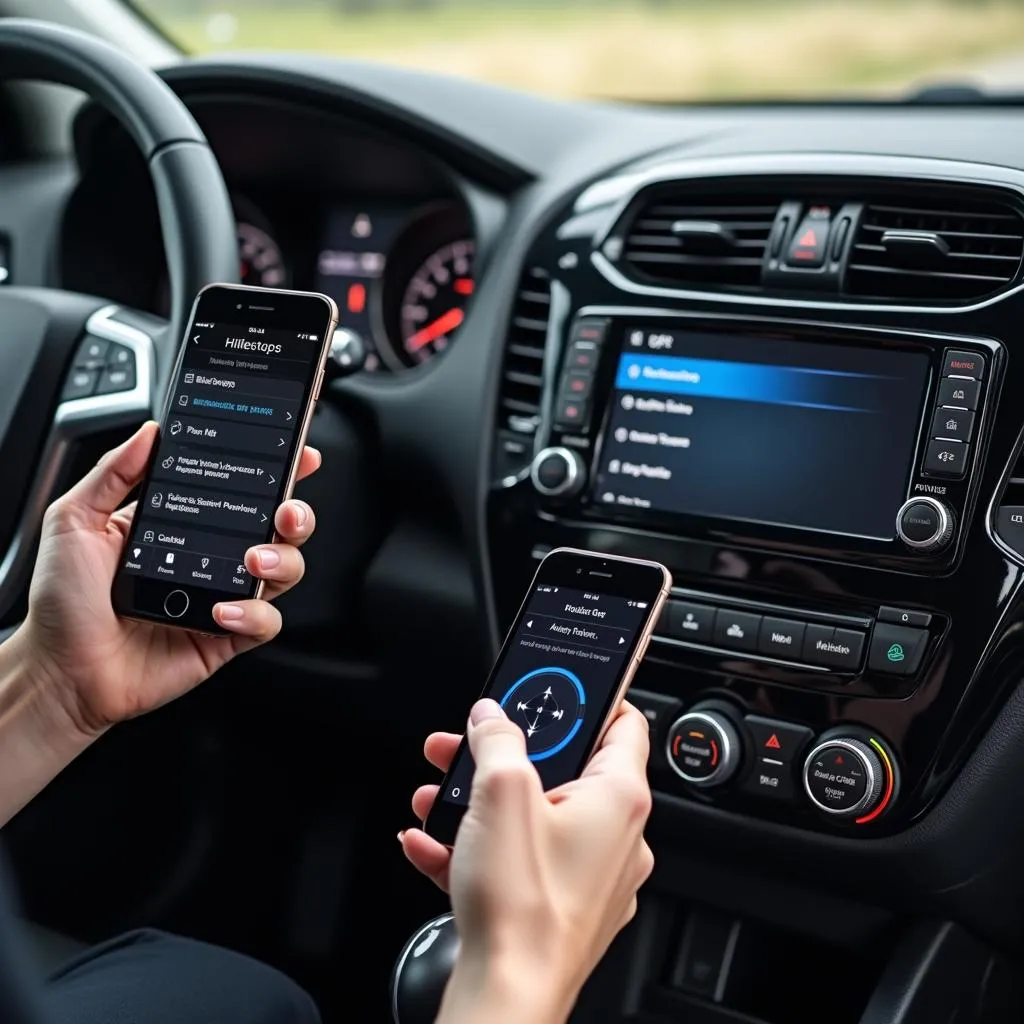The brake warning light on your 2005 Hyundai Elantra GT is a crucial safety feature. Ignoring it could lead to serious consequences. This comprehensive guide will help you understand why your brake light is on, how to diagnose the problem, and what steps you can take to fix it. Let’s get started.
Understanding the Brake Warning Light
The brake warning light in your Elantra GT can illuminate for several reasons, ranging from a simple issue like low brake fluid to more complex problems with the braking system itself. Understanding these potential causes is the first step towards resolving the issue. A common misconception is that the brake warning light solely indicates worn brake pads. While this can be a factor, it’s not the only one. It’s essential to investigate further. For instance, have you noticed any unusual noises or a spongy brake pedal? These can be indicators of a more serious underlying problem. You can find more information about this in our article on the elantra brake warning light.
Why is my Brake Warning Light On?
Several factors can trigger the brake warning light. Low brake fluid is the most common culprit. A leak in the brake lines or worn brake pads can cause the fluid level to drop. A faulty brake light switch, parking brake engagement, or issues with the ABS system can also activate the light.
What to do when your brake light comes on:
- Check the parking brake: Ensure the parking brake is fully disengaged.
- Inspect brake fluid level: Open the hood and check the brake fluid reservoir. If it’s low, add brake fluid but be sure to address the underlying cause of the low fluid.
- Check for leaks: Look for signs of brake fluid leaks around the brake lines, calipers, and wheel cylinders.
- Inspect brake pads: If the brake pads are worn down to the warning tab on brake pads, they need replacing.
Diagnosing the Problem: A Step-by-Step Guide
If the simple checks mentioned above don’t resolve the issue, further diagnosis is required.
- Visual inspection: Carefully examine all brake components, including the lines, hoses, calipers, and rotors. Look for any signs of wear, damage, or leaks.
- Brake pad inspection: Remove the wheels and check the thickness of the brake pads. Replace them if they are worn.
- Brake fluid test: Have the brake fluid tested for moisture content. Moisture can compromise braking performance.
- ABS system check: If your Elantra GT has an anti-lock braking system (ABS), have it scanned for codes using a diagnostic tool. This can identify issues within the ABS module or sensors.
“Regular brake system maintenance is crucial,” says John Miller, a certified automotive technician with over 20 years of experience. “A simple brake inspection every six months can prevent major issues down the road.” This proactive approach can save you time, money, and potential headaches.
Common Issues with 2005 Hyundai Elantra GT Brakes
Some brake issues are more common in the 2005 Elantra GT than others. These include premature brake pad wear, warped rotors, and issues with the ABS system. If you’re experiencing these problems, consult a qualified mechanic. More information can be found on our page about the brake warning light symbol 2005 elantra.
Remote Diagnostics and Programming
Advancements in automotive technology allow for remote diagnostics and programming. This allows technicians to access your vehicle’s systems remotely, identify issues, and even install software updates. While this technology is not always applicable to a 2005 model, it’s worth exploring for future reference. You might want to check out the ip brake warning light for more insights. Also, issues similar to this can be found on other models, such as the corolla auto brake wear warning sound.
Conclusion
Addressing the brake warning light on your 2005 Hyundai Elantra GT is essential for your safety and the longevity of your vehicle. By understanding the potential causes and following the diagnostic steps outlined in this guide, you can resolve the issue effectively. Remember, regular maintenance and prompt attention to warning signs can prevent major brake problems. Don’t hesitate to consult a qualified mechanic if you encounter complex issues beyond your capabilities. Taking care of your brakes is an investment in your safety.

